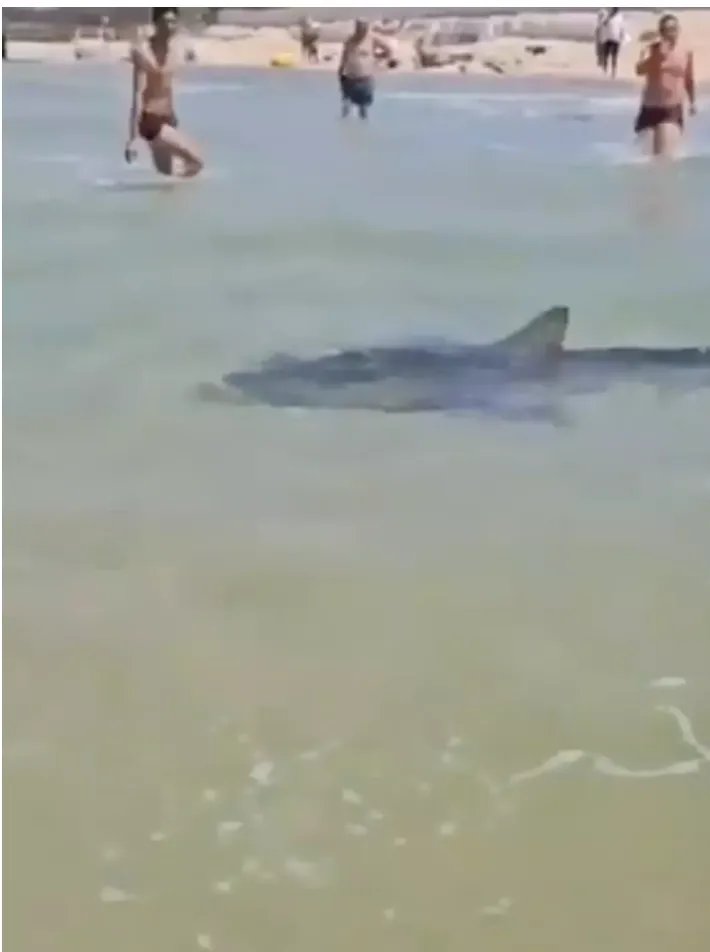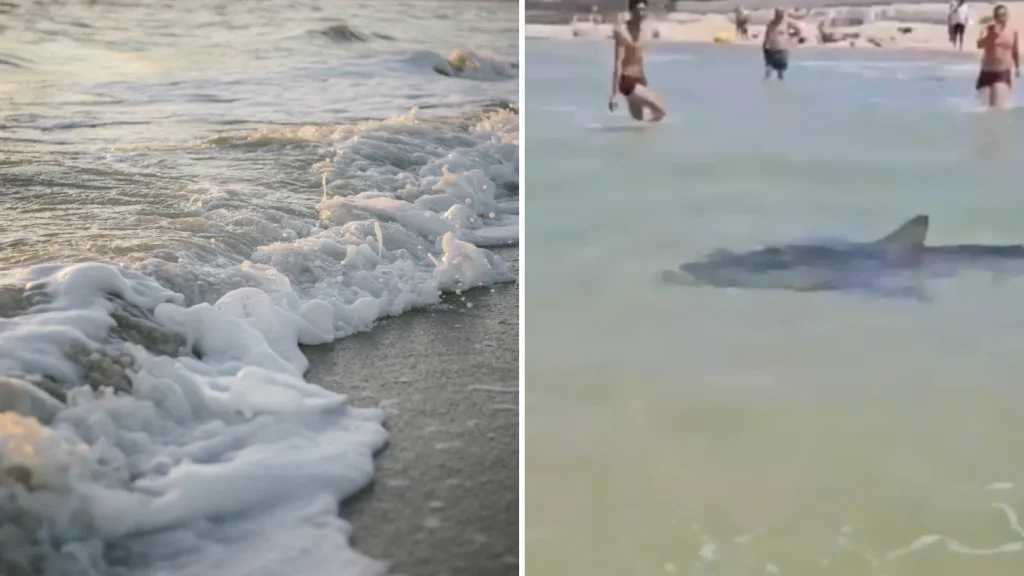What began as a sunny, serene afternoon on the Mediterranean coast quickly turned into a nightmare for swimmers at a beach in Hadera, Israel.
Visitors had gathered to cool off as temperatures climbed past 80°F (27°C). Children splashed in the shallows, and adults waded deeper into the waters — completely unaware that something terrifying was lurking nearby.
Suddenly, screams erupted across the beach.
A man was heard crying for help as bystanders watched in shock. In one recording, a witness can be heard urgently calling authorities:
“There’s someone here that a shark has bitten. He’s screaming, ‘Help!’ He’s in the sea at Hadera. He’s drowning. Nobody’s coming to save him.”
Moments later, the water turned red.

The man, later identified as a 40-year-old from central Israel, had reportedly gone swimming to see the sharks inspired by recent media stories highlighting their presence near Hadera. His belongings, including a bag and bicycle, were recovered from the shore.
The following day, authorities confirmed a tragic discovery: human remains were found, believed to be those of the missing swimmer. Several samples were sent for testing to confirm the identity.
While shark attacks in Israel are extremely rare only four recorded in 80 years, none fatal since 1948 this tragedy has sparked urgent scientific and public safety conversations.
The waters where the attack took place lie near the Orot Rabin power station, an area that scientists say holds the key to this devastating event.
Professor Dov Zviely, from Ruppin Academic Center’s School of Marine Sciences, explained,
“The warm water creates a current as strong as the Jordan River. The sharks come because of the heat, but also because many fish wash down from the Alexander Stream, providing a steady food source.”

The area has become a seasonal hot spot for large predators, especially dusky and sandbar sharks, which can grow up to nine feet long. These species usually migrate long distances to stay in warmer waters during the winter months.
Though typically non-aggressive, marine experts warn that these animals can become stressed by human activity a fact that may have contributed to the rare attack.
Dr. Adi Barash, a marine biologist and conservationist, warned:
“Heavy human presence stresses the sharks. People must avoid touching or feeding them — they are not pets. This is peak feeding season for the sharks due to warming waters and increased fish deaths from recent rains.”
She also emphasized that authorities need to create better separation zones between marine wildlife and swimmers to avoid further tragedy.
In response, the Society for the Protection of Nature in Israel issued a statement criticizing the lack of protective measures. They noted that the area attracts swimmers, divers, and shark-watchers all at once a recipe for potential disaster.

“It is not enough to hope things will go well,” a spokesperson said. “We must act to ensure safe human-shark interaction zones, both for people and these protected animals.”
Despite the shock, scientists stress that this was not an act of aggression but a rare convergence of seasonal behavior, warming seas, and human activity in the wrong place at the wrong time.
As beaches reopen and swimmers return to the water, the message from experts is clear: respect nature, understand its patterns, and recognize that even the calmest beach can change in an instant.
Feature Image Credit: (X)


